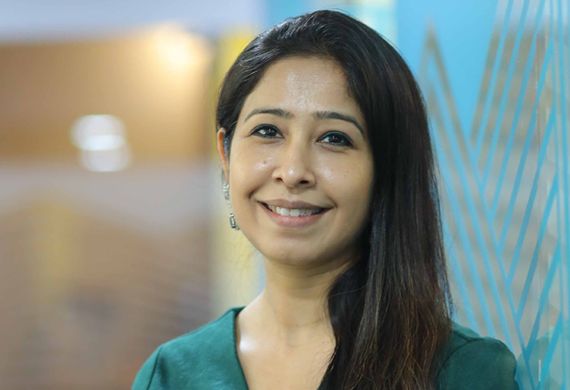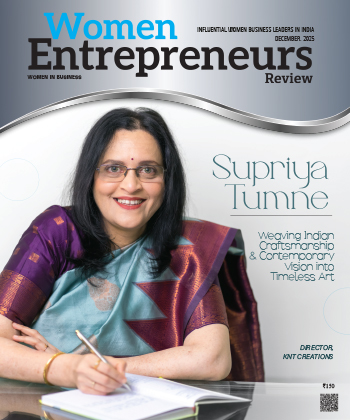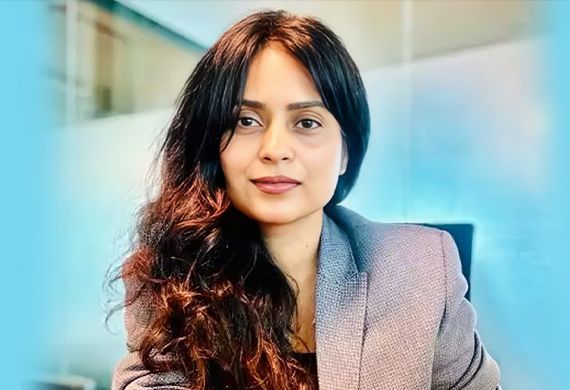
Strong Culture at the Core: Expert Advice on Managing Blue-Collar Workforce & Client Relationships
By: Lovely Mehera, Director, Awl India
Lovely Mehra, a dynamic supply chain professional with a proven track record in driving operational excellence, sustainability, and innovation across global logistics networks. With over 15 years of industry experience, she is committed to advancing best practices and elevating standards across the transportation and logistics sector.
In her current role at AWL India, Lovely also leads HR function, where she manages a blue-collar workforce. She also focuses on building strong client relationships that are built on communication and trust.
In an interaction with the Women Entrepreneurs Review team, Lovely shares her insights on skilfully managing a blue-collar workforce that might not be desk-based or digitally connected. Drawing examples from initiatives taken by AWL India to build a strong and skilled blue-collar workforce, she also highlights L&D strategies for identifying and training leaders of tomorrow. Lovely also talks about the criticality of building relationships with clients while catering to their specific requirements.
To know more, read the article below.
As an HR leader dealing with a largely blue-collar workforce, how do you adapt company culture strategies for teams that may not be desk-based or digitally connected?
That’s a very important and often overlooked aspect of HR leadership. At AWL, we recognize that our blue-collar workforce is the backbone of our operations — and we make a conscious effort to ensure they feel valued, informed, and connected to the company’s larger purpose.
Because they are not desk-based or always digitally connected, we prioritize face-to-face communication. We hold regular interactive sessions at our warehouses where we explain company policies, benefits, insurance schemes, and even government welfare programs in simple, clear language. This not only helps them understand their rights and benefits but also builds trust and inclusion.
We also bring in a local community focus by hiring a percentage of employees from the communities where we operate. This strengthens local ties and creates a shared sense of purpose.
Another important part of our strategy is employee welfare initiatives — for example, in some cases, we sponsor the education of the children of our blue-collar employees. This sends a strong message that the company cares about their long-term well-being, not just their work output.
Ultimately, adapting culture for a non-digital workforce is about being present, personal, and consistent — meeting them where they are, listening to their needs, and making sure they feel like an essential part of the AWL family.
How do you recognize and reward performance in a way that resonates with blue-collar teams?
At AWL, we’ve put a lot of thought into this. We run a Reward and Recognition (R&R) program every month, where we identify high-performing blue-collar employees across our warehouses. These team members are recognized publicly with certificates and cash prizes, which not only acknowledges their hard work but also motivates their peers and creates a healthy spirit of performance.
We make sure that the selection process is transparent and performance-based — it’s not just about meeting numbers but also about teamwork, discipline, and going the extra mile. Importantly, the recognition happens in front of their colleagues so they feel genuinely celebrated.
Beyond formal recognition, we also emphasize regular verbal appreciation and feedback from supervisors, which goes a long way in building morale and engagement.
In short, we focus on recognition that is personal, public, and tied to both individual effort and the larger goals of the company — that’s what really resonates with our blue-collar teams.
Building a talent pipeline is crucial for business success today. How do you identify high-potential employees and future leaders? Has the company implemented any L&D initiatives to train future leaders?
At AWL, we strongly believe that our people are our most important asset — and identifying high-potential talent early on is key to building a strong leadership pipeline.
We look beyond just performance metrics. We observe qualities like initiative, problem-solving, adaptability, and the ability to work well in teams. Often, our supervisors and CRM teams play an important role in recommending employees who show these traits on the ground.
Once we’ve identified these high-potential individuals, we focus on developing them through learning and development (L&D) initiatives. This includes on-the-job training, mentorship by senior managers, and in some cases, formal upskilling programs. For our blue-collar workforce, this may involve training on advanced equipment or supervisory skills; for mid-level employees, it could include leadership development workshops.
We also make sure to engage with local hires and help them grow into leadership roles within their own communities, which strengthens both our workforce and our community impact.
Overall, we are committed to creating clear growth pathways — so employees at every level know that if they perform well and show potential, there’s a future for them at AWL beyond just their current role.
Building relationships with varied clients and understanding their requirements is a key component of your role. To this end, what strategies have proven most effective for building trust with clients?
Building trust with clients starts with deep listening and understanding — not just hearing what they say, but really grasping their expectations, challenges, and goals. At AWL, we take a very client-centric approach from the beginning. I personally participate in many of the initial client meetings alongside our CRM and operations teams, so I can understand firsthand what the client needs — whether it’s specialized manpower, a particular skill set, or a customized process.
Once we understand those needs, my role is to ensure that the right people are deployed on the ground, that they are well-trained, and that we close any gaps proactively. This kind of alignment builds confidence because the client can see that we are committed to delivering not just resources, but solutions tailored to their business.
Another key strategy is regular communication — not just when things go wrong, but even when they go right. We make it a point to update clients on progress, listen to feedback, and continuously improve. And behind the scenes, we also focus on community hiring and employee welfare, which clients value because it shows our commitment to sustainability and social responsibility.
In short, trust is built by combining deep listening, consistent delivery, and a genuine commitment to both client success and the well-being of our workforce.
Cookie cutter solutions are a thing of the past as clients today look for customized and focused solutions. How do you go about understanding and addressing specific client requirements?
At AWL, we completely agree that one-size-fits-all solutions no longer work — every client has unique needs based on their industry, scale, and priorities.
My approach starts right at the first client interaction. I actively participate in these meetings, not just as HR but as a partner who wants to understand what success looks like for the client. We explore their operational needs, what kind of team they need on the ground, and what specialized skills or experience are critical to meet those needs.
Based on this understanding, I work closely with our CRM and operations teams to ensure we’re aligning the right people — whether that means hiring fresh talent, upskilling existing teams, or even bringing in experts from outside.
Importantly, we also factor in local hiring, which not only helps with operational efficiency but also strengthens the client’s brand in the community. And in cases where blue-collar workers are involved, we make sure they’re educated about their roles, benefits, and policies, so they’re set up for success — which ultimately benefits the client as well.
So, the key is deep collaboration across teams, early involvement, and a people-focused approach that ensures we’re solving for the client’s specific context, not just delivering a standard service.
What are your goals and vision for AWL India’s future? Can you tell us about any interesting projects or initiatives that your team is working on?
At AWL, our vision is to be a pioneering force in the supply chain and logistics industry, with technology at the core of everything we do. We want to set new benchmarks for operational excellence, customer experience, and employee engagement — all while making a meaningful contribution to the communities where we operate.
We are currently working on several cutting-edge initiatives that reflect this vision. We are implementing technologies like RFID-enabled warehouse automation, automated tunnels, ASRS (Automated Storage and Retrieval Systems), robot-based putaway automation, and AI-enabled distribution management. These innovations are transforming the way we operate — improving speed, accuracy, and efficiency across the supply chain.
From an HR perspective, this means we’re not only hiring the right talent but also preparing our workforce for this transformation through upskilling and training initiatives. We want to make sure that both our white-collar and blue-collar teams are ready to work alongside these technologies and continue delivering exceptional results.
Looking ahead, my personal goal is to keep strengthening the link between people and technology — making sure that as AWL evolves, our people grow with us and continue to feel engaged, valued, and part of our success story.
Most Viewed
- 1 Women's Health Startup HerMD Closing Doors Amid Industry Challenges
- 2 5 Famous Women in Indian Armed Forces
- 3 Saudi Women No longer Require Male Permission for Clothing Choices, says Prince MbS
- 4 Kolkata Medtech Startup Innovodigm Raises Rs 5.5 Crore Seed Funding Led by IAN Group
- 5 Yamunanagar's Kashish Kalra Honoured after Securing 111th Rank in UPSC Civil Services Exam
- 6 Madurai Appoints Its First Woman Corporation Head
- 7 IAS Vijayalakshmi Bidari Appointed as the new Nagpur Divisional Commissioner
- 8 American Entrepreneur Lucy Guo Overtakes T Swift to become Youngest Female Billionaire
- 9 ICC Women's World Cup 2025 Trophy Showcased at Indore's Holkar Stadium
- 10 Aparna Saxena's Beauty Venture AntiNorm Launches in India
- 11 Vidya Nataraj Co-Founded BlueStone Jewellery & Lifestyle files IPO
- 12 5 Women Freedom Fighters of India
- 13 Dr. G Krishnapriya appointed as CEO for Trichy
- 14 M3M & Sirona Partner to Introduce Menstrual Hygiene Vending Machines in 15 Locations
- 15 Punjab Govt launches SHE Cohort 3.0 Supporting Tech-led Women Startups
- 16 Indian origin Lawyer, Sweena Pannu appointed as the US New Superior Court Judge
- 17 The Aurora Tech Award recognizes 4 Indian Women-led Startups
- 18 Kerala's Republic Day parade featured an all-female tableau
- 19 Manisha Kabbur Becomes Karnataka's First Woman International Karate Coach
- 20 Director K. S. Ravikumar's Daughter Maalica Ravikumar Launches Life Coaching Company 'Evergrowth Academy' for Women
- 21 Leezu's Raises Pre-Seed Funding to Accelerate Growth in Sexual Wellness Industry
- 22 Sattu: Super-easy summer drink for PCOS gut healing
- 23 Swathi Nelabhatla creates Sitha App, India's First Women-Exclusive Gig Platform
- 24 7 Timeless Female Kathak Dancers & their Iconic Legacies
- 25 Meet 7 Iconic Women Architects of Modern India & their Most Impactful Work
- 26 This Woman-led Insuretech Startup is Helping Bridge the Education Financing Gap in India
- 27 Women Leaders Share Lessons Learnt from India Women's WC Win
- 28 5 Enterprising Women Founders Powering Singapore's Tech & Innovation Landscape
- 29 4 Women. 4 Stories. One Vision for Smarter, Stronger Healthcare
- 30 Global Gender Gap Narrows to 68.8%, But Full Equality 123 Years Away: WEF Report 2025
- 31 Changemakers: 7 Women Entrepreneurs Taking the Make in India Movement Forward
- 32 Meet Lucy Guo, The Youngest Self-Made Female Billionaire Disrupting Tech
- 33 How Women are Driving India's Festive Online Shopping Surge






